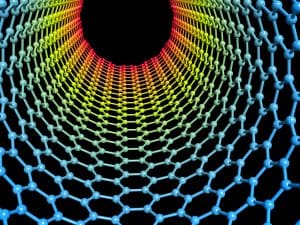
The algorithm uses experimental structural information from nanoparticle reference systems and builds accurate atomic models of the particles structure and its interactions with the environment.
The implementation of artificial intelligence (AI) in scientific research could be the catalyst for major breakthroughs, due to AI’s ability to read past experiments, link it to present day research, and predict results.
While humans are hindered by how much they can remember, an AI can hold magnitudes more information. With this, it may be able to provide insights by analysing the data available from researchers.
SEE ALSO: Why Companies and Workers Shouldn’t Be Afraid to Use AI in Robotics Efforts
This is what researchers at the Nanoscience Center and Faculty of Information Technology in the University of Jyväskylä, Finland hope to achieve with a new algorithm, designed to “predict binding sites of molecules at the metal-molecule interface of hybrid nanoparticles.”
The algorithm uses experimental structural information from nanoparticle reference systems, published at an earlier date, for its predictions. From this, researchers can build accurate atomic models of the particles structure and its interactions with the environment. The AI can also rank the model based on previously analysed models of similar measured properties.
“The basic idea behind our algorithm is very simple. Chemical bonds between atoms are always discrete, having well-defined bond angles and bond distances. Therefore, every nanoparticle structure known from experiments, where the positions of all atoms are resolved accurately, tells something essential about the chemistry of the metal-molecule interface.
The interesting question regarding applications of artificial intelligence for structural predictions is: how many of these already known structures we need to know so that predictions for new, yet unknown particles become reliable? It looks like we only need a few dozen of known structures,” said the lead author of the article in Nature Communications, Sami Malola, a University Researcher at the Nanoscience Center of the University of Jyväskylä.
“This is a significant step forward within the context of new interdisciplinary collaboration in our university. Applying artificial intelligence to challenging topics in nanoscience, such as structural predictions for new nanomaterials, will surely lead to new breakthroughs,” said Tommi Kärkkäinen, a professor at the Faculty of Information Science in the University of Jyväskylä.



























